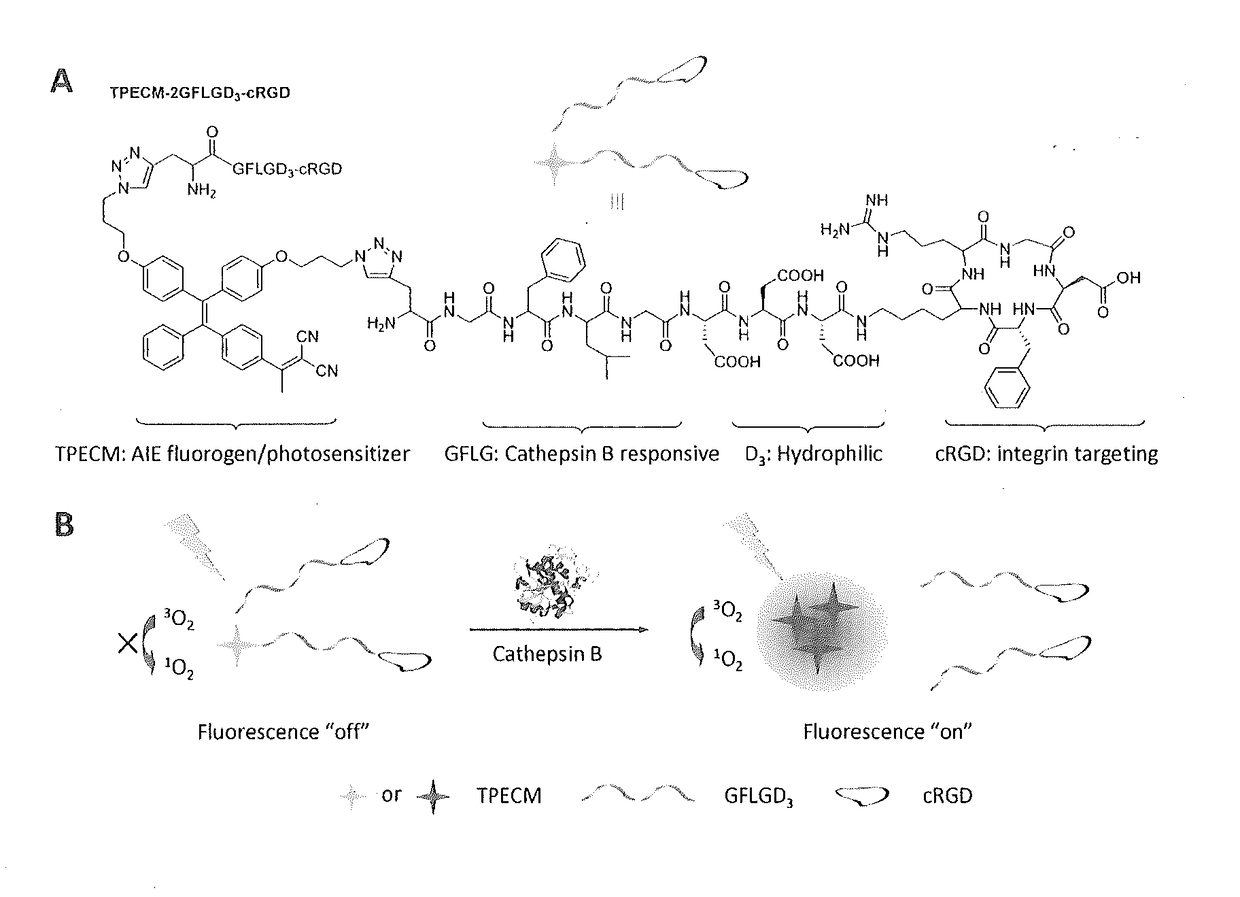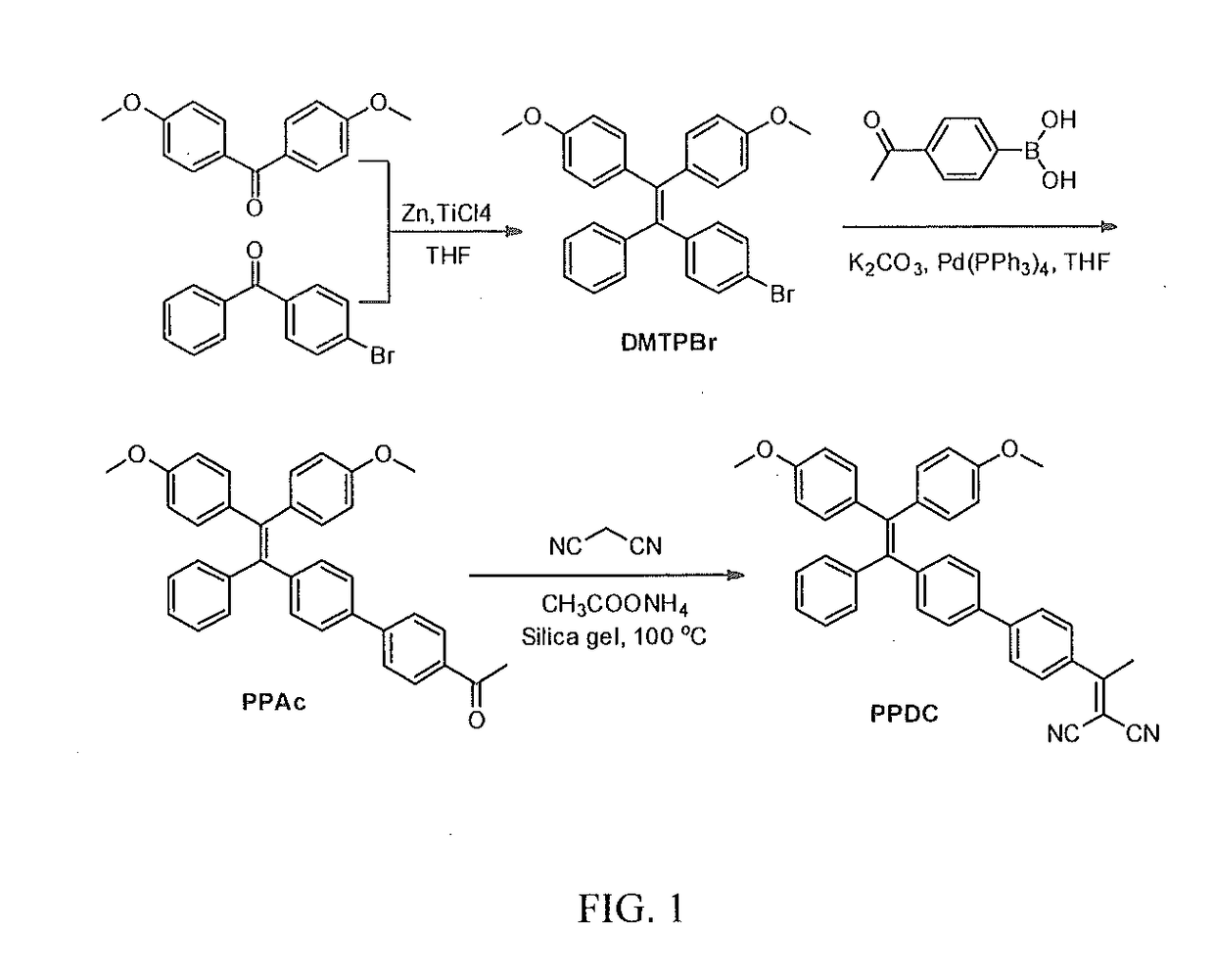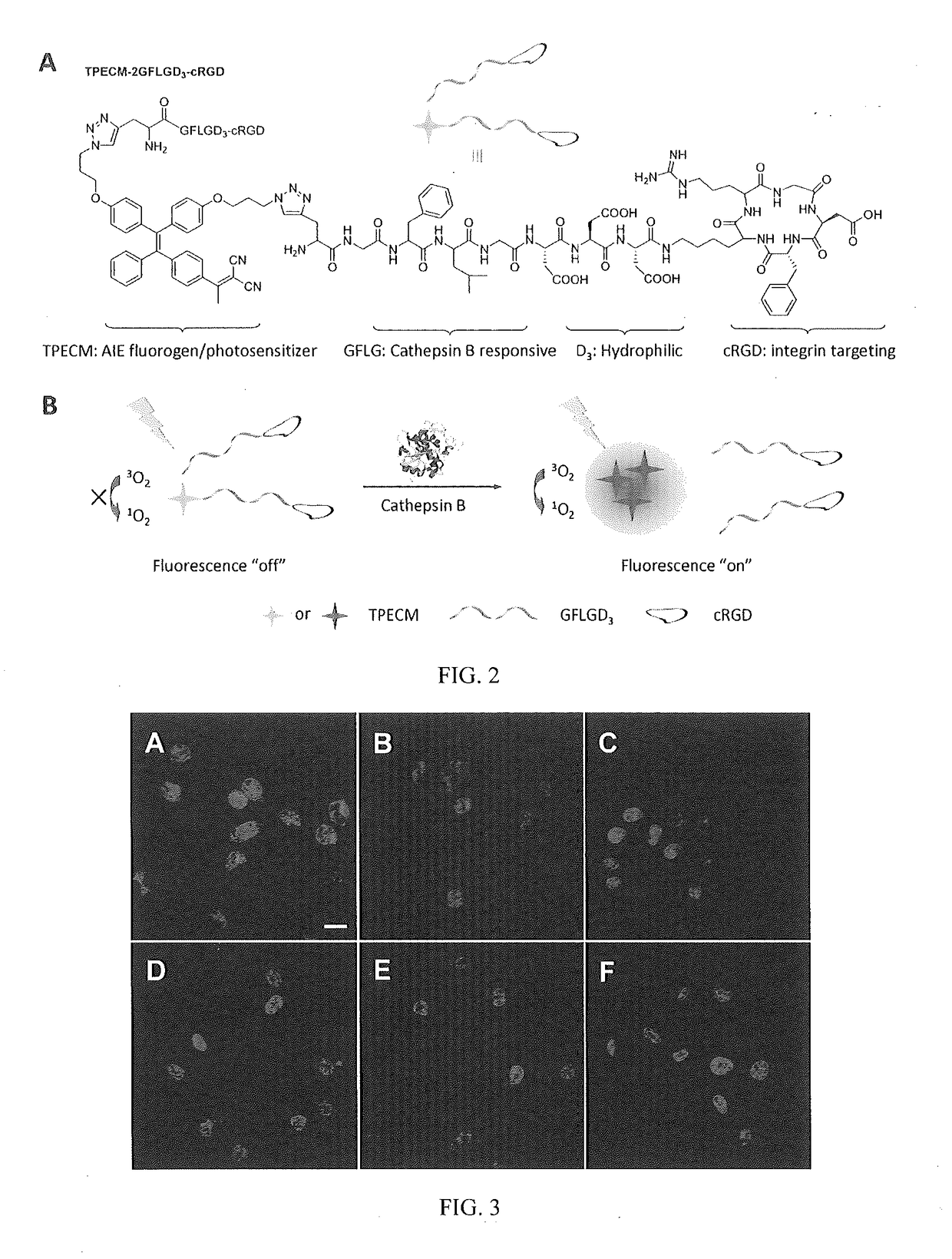Polymers And Oligomers With Aggregation-Induced Emission Characteristics For Imaging And Image-Guided Therapy
a technology of aggregation-induced emission and polymer, applied in the field of fluorescence bioimaging, can solve the problems of high cost and safety issues, low transfection efficiency of non-viral methods, and rapid loss of plasmids with a correlated drop in fluorescence, so as to achieve efficient and effective drug and gene delivery
- Summary
- Abstract
- Description
- Claims
- Application Information
AI Technical Summary
Benefits of technology
Problems solved by technology
Method used
Image
Examples
example 1
Aggregation-Induced Emission Fluorogens for Cell Tracing
[0181]Fabrication of surface functionalized green emissive AIE dots for longterm cell tracing using an AIE fluorogen 4,7-bis[4-(1,2,2-triphenylvinyl)phenyl]benzo-2,1,3-thiadiazole (BTPEBT) as an example is reported. BTPEBT is an example of a conjugated system that can be used in the present invention. A mixture of lipid-poly(ethylene glycol) (PEG) and lipid-PEG-maleimide was chosen as the encapsulation matrix to endow BTPEBT into AIE dots with biocompatibility and surface functionality. A cell penetrating peptide derived from HIV-1 transactivator of transcription protein (Tat) was further conjugated to the dot surface to yield AIE-Tat dots with high cellular internalization efficiency. The AIE-Tat dots showed an emission maximum at 547 nm, similar to GFP, with a high quantum yield of 63%, and stable green fluorescence in either different pH conditions or long time incubation in buffer solution for over 10 days. The cell labelli...
example 2
[0224]Specific Light-Up Bioprobe with AIE and Activatable Photoactivity for the Targeted and Image-Guided Photodynamic Ablation of Cancer Cells
[0225]In another example embodiment, the present invention is an activatable photosensitizer illustrated in FIG. 2A useful for image-guided photodynamic ablation of cancer cells. FIG. 2A illustrates a synthetic route to the functionalizable TPE derivative TPECM-2N3 and the bioprobe TPECM-2GFLGD3-cRGD.
[0226]Cathepsin B is a lysosomal protease overexpressed in many types of tumors. It can specifically cleave substrates with a -Gly-Phe-Leu-Gly-(GFLG) peptide sequence and has been used for enzyme-responsive drug delivery. On the other hand, cyclic arginine-glycine-aspartic acid (cRGD), which can selectively interact with avb3 integrin overexpressed in cancer cells, has been used for targeted drug delivery.
[0227]In an example embodiment, the probe is composed of four parts: 1) an orange fluorescent AIE fluorogen as an imaging reagent and photosens...
example 3
[0231]Image-Guided Combination Chemotherapy and Photodynamic Therapy Using a Mitochondria-Targeted Molecular Probe with AIE Induced Emission Characteristics
[0232]In another example embodiment, the present invention is AIE probe with zero, one or two triphenylphosphine ligands, the probe being able to selectively target the mitochondria. An example embodiment of a probe with zero PPh3 ligands is TPECM-2Br, which is represented by the following structure:
An example of a probe with one PPh3 ligand is TPECM-1TPP, represented by the following structure:
An example of a probe with two PPh3 ligands is TPECM-2TPP, represented by the following structure:
[0233]A synthetic route to the above compounds can be seen in FIG. 5.
[0234]Lipophilic triphenylphosphonium as a mitochondria targeting moiety was selected to conjugate to TPECM-2Br because it possesses a delocalized positive charge and can selectively accumulate in cancer cell mitochondria by trans-membrane potential gradient. The obtained TPE...
PUM
| Property | Measurement | Unit |
|---|---|---|
| Fluorescence | aaaaa | aaaaa |
| Chemotherapeutic properties | aaaaa | aaaaa |
Abstract
Description
Claims
Application Information
 Login to View More
Login to View More - R&D
- Intellectual Property
- Life Sciences
- Materials
- Tech Scout
- Unparalleled Data Quality
- Higher Quality Content
- 60% Fewer Hallucinations
Browse by: Latest US Patents, China's latest patents, Technical Efficacy Thesaurus, Application Domain, Technology Topic, Popular Technical Reports.
© 2025 PatSnap. All rights reserved.Legal|Privacy policy|Modern Slavery Act Transparency Statement|Sitemap|About US| Contact US: help@patsnap.com



